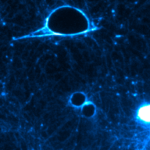Link to Pubmed [PMID] – 27560688
PLoS ONE 2016;11(8):e0161446
Botulinum neurotoxins (BoNTs) are counted among the most toxic substances known and are responsible for human botulism, a life-threatening disease characterized by flaccid muscle paralysis that occurs naturally by food poisoning or colonization of the gastrointestinal tract by BoNT-producing clostridia. To date, 7 serologically distinct serotypes of BoNT (serotype A-G) are known. Due to the high toxicity of BoNTs the Centers for Disease Control and Prevention (CDC) have classified BoNTs as category A agent, including the six biological agents with the highest potential risk of use as bioweapons. Well tolerated antibodies neutralizing BoNTs are required to deal with the potential risk. In a previous work, we described the development of scFv and scFv-Fc (Yumab) from macaque origin (Macaca fascicularis) neutralizing BoNT/A and B by targeting the heavy and light chain of each serotype. In the present study, we humanized the macaque antibodies SEM120-IIIC1 (anti-BoNT/A light chain), A1HC38 (anti-BoNT/A heavy chain), BLC3 (anti-BoNT/B light chain) and B2-7 (anti-BoNT/B heavy chain) by germline-humanization to obtain a better potential immunotolerance in humans. We increased the Germinality Index (GI) of SEM120-IIIC1 to 94.5%, for A1HC38, to 95% for BLC3 and to 94.4% for B2-7. Furthermore, the neutralization efficacies of the germline-humanized antibodies were analyzed in lethal and non-lethal in vivo mouse assays as full IgG. The germline-humanized IgGs hu8SEM120-IIIC1, hu8A1HC38, hu8BLC3 and hu8B2-7 were protective in vivo, when anti-heavy and anti-light chain antibodies were combined. The synergistic effect and high humanness of the selected IgGs makes them promising lead candidates for further clinical development.


